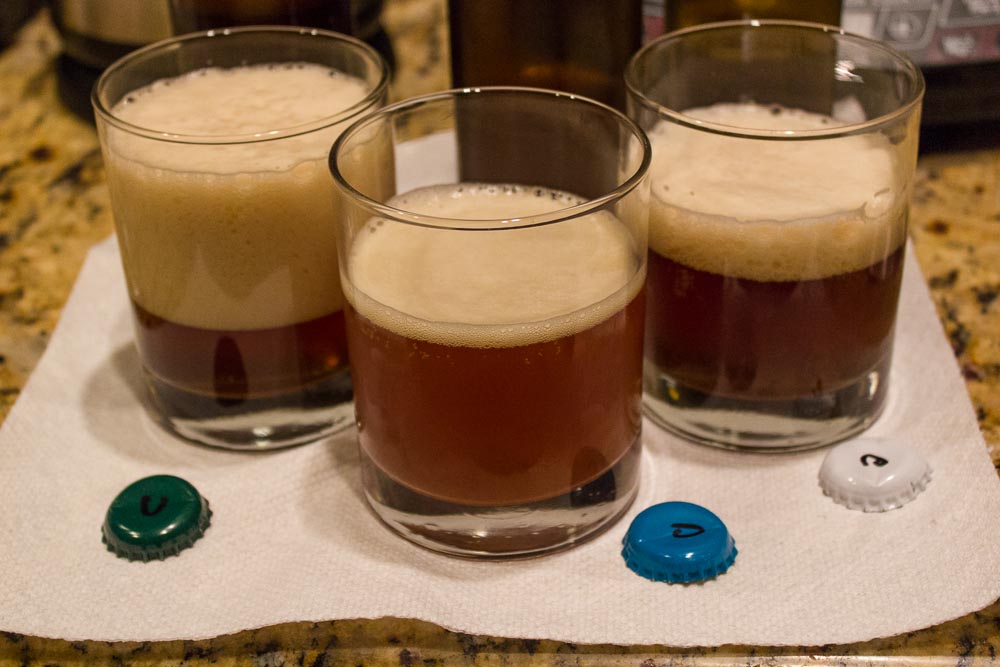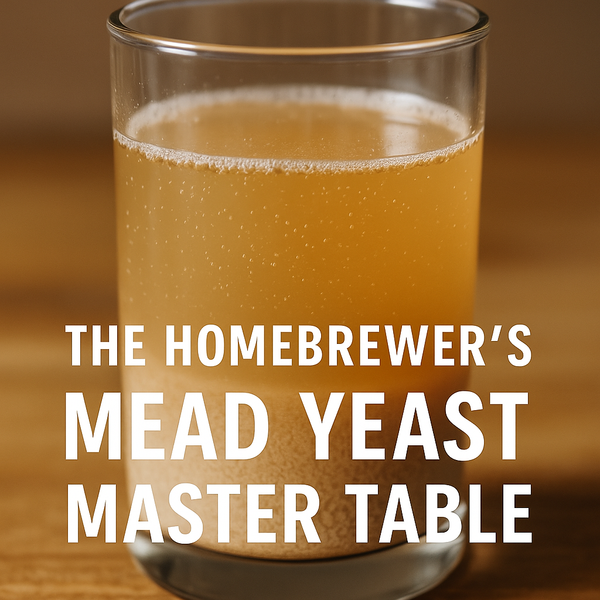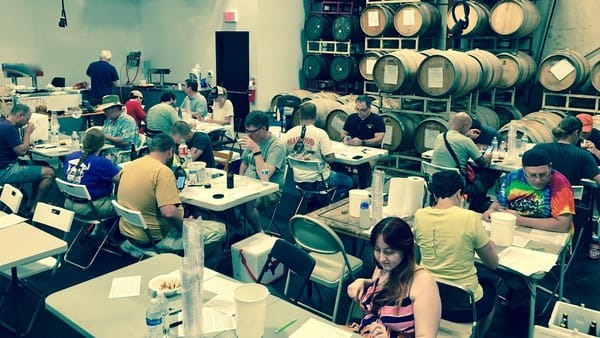Yeast Experiment - Tasting it green...

Boredom causes me to do some stupid things. Like, open up the week-old "control" conditioned bottles for the experiment. These have only been conditioning for a week now, so they are not really ready for consumption and need some aging. I didn't have high hopes at all, but now I wonder if it is necessary to go any further. Anyway, without referring to my notes, I can easily pick out the overpitch.

Raw notes below:
White Cap: Yeasty aroma with a bit of wet bread smell. Definite malt. Still very young. Pours like a brown abbey ale with a creamy, firm off-white head with lacing. Carbonation is good. Taste has a definite Belgian bite, as expected. Some warm alcohol notes. No banana or pepper. This has some way to go, but I expect it to improve over the next few weeks. (This is the half-pitch sample)
Blue Cap: Pale, almost red, slightly brown. Watery, no staying head, and no lace. Nose is all malt, wet grain, some citrus, and mineral. The taste is horrible. Tastes like trub - yeasty, bitter, strong mineral flavor. Oxidized in handling (all three bottles were also hydrometer samples) as expected. Profoundly bad - not sure aging will help at all. (This is the double pitch sample)
Green Cap: Cleaner yeast and malt aroma - a light bread-like smell of rising dough. Light lace with a thick creamy head with staying power. Dissolves into chunky clumps. Slightly yeasty flavor with a little bite, lingering aftertaste despite some warming alcohol. (This is the control pitch sample)

Without looking at my notes, I can immediately identify the double pitch. I have never had such an example of off-flavors. The control and half pitch were much closer and definitely different. Neither really carries all of the flavors I would expect of a double. Time and aging should improve these beers; however, over-pitching seems like a terrible thing to do. Perhaps the oxidation (present in all of the tastes, but less so in the control) amplified or masked things, but the Blue bottle was horribly wrong. I hope I don't anger my tasters when I can line them up... ugh




